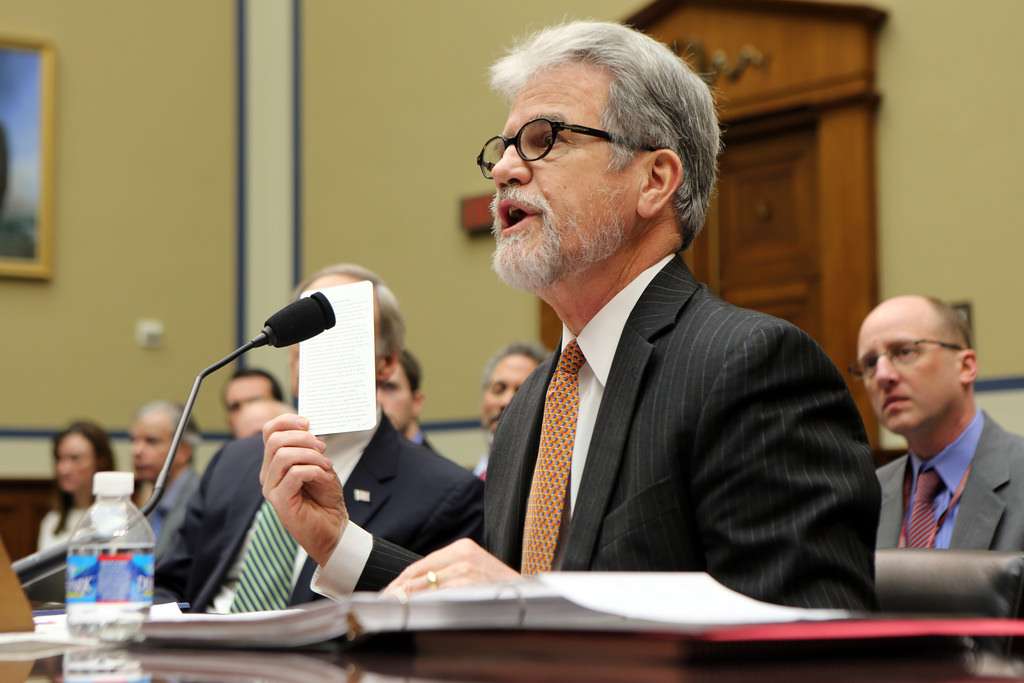How Republicans Could Replace Obamacare
A new proposal from three GOP Senators tackles access and affordability.

What is the GOP's health care plan? For years, this has been the rejoinder from supporters of Obamacare whenever asked to confront the flaws in their own legislation. It was an attack line, but also a question worth asking: For the last five years, Republicans have spent plenty of time bashing the president's health law, but far less time describing what they would do instead.
A new proposal from Republican Sens. Coburn (Okla.), Burr (N.C.), and Hatch (Utah) represents a tentative attempt to respond substantively to the question. It's called The Patient Choice, Affordability, Responsibility, and Empowerment (CARE) Act, and it's not intended to be the answer, but one possibility—a first step toward a Republican vision for reform. It's less radical in scope than Obamacare, and more modest in its aims: The goal isn't to rethink the health care system. It's to make it better, cheaper, and more accessible for the majority of people.
The plan begins by repealing Obamacare in its entirety: No more exchanges, no more individual mandate, no more federal benefits requirements. From there, it works from a simple understanding: Most Americans already have health coverage, and the large majority of them say they like it. The biggest complaint about the system is cost. Accordingly, that's where the plan devotes much of its focus.
Gone are Obamacare's raft of expensive health insurance mandates, as well as its restrictive age-rating rules. Those rules prohibit insurers from charging older adults more than three times what they charge young adults in premiums—in effect, forcing the young to subsidize the old. In place of those rules, the GOP proposal would set a looser federal age rating benchmark, one that states could alter or eliminate if they wished. Much of the plan involves returning insurance regulation to the states. Without the heavy hand of the federal government directing health plan design, insurers would be able to design a wider array of cheaper plans tailored more to consumer demand than government rules.
That's not to say that the plan would impose no restrictions on the health insurance market, however. Most forms of rescission, in which insurers unilaterally terminate coverage, often when expensive treatments begin, would be prohibited. (Insurers could still cancel plans in instances of clear-cut fraud.) The proposal would continue to allow dependents up to the age of 26 to stay on their parents' health plans. And it would eliminate medical underwriting for the continuously insured; those switching plans, even from employer coverage into the individual market, would not have to worry about being denied coverage due to preexisting conditions. If you have a plan, you can keep your plan—or get another one.
For those who don't already have insurance, the proposal envisions a one-time open-enrollment period, in which the currently uninsured can sign up regardless of health status. Everyone, even the sick uninsured, would have an opportunity to buy in. But unlike Obamacare, no one would be required to do so.
The plan would set up a system of targeted tax credits to help those who wanted coverage afford it. The credits would be available to individuals and families up earning up to 300 percent of the poverty line, and would increase with age, so that older individuals with more expensive coverage would be given more assistance.
Those credits would be advanceable and refundable, and thus would cost money to offer. The proposal doesn't offer a dollar figure for how much the credits would cost, but it does suggest a way to pay for them: capping the tax exclusion for employer provided care at 65 percent of an average plan's cost. None of the taxes that Obamacare relies on to pay for its coverage expansion would remain.
The combined effect of its changes, the plan's authors say, would be revenue neutral and competitive with Obamacare in terms of coverage. No independent entity has scored the plan, however, and a reasonable assumption is that in the long run, the plan would leave more people uninsured than Obamacare.
By design, the plan is less ambitious than Obamacare. And it is less ambitious than a Republican plan that might have been proposed had Obamacare never passed: It leaves the tax exclusion for employer-sponsored coverage in place, capping it rather than ending it. And it does away with most of the health care payment and delivery system reform that Obamacare's authors and supporters hoped would slowly reshape the system.
What the proposal's authors are betting, however, is that at this point the public does not want grand ambition so much as attainable, practical improvement. And they are willing to bend, if necessary, to get there. The plan has not yet been turned into legislation, and at least some of its details remain subject to change and negotiation. It's designed as a conversation starter rather than a final proposal, a starting point meant to build consensus rather than the final word.
Because the conversation is happening now, following years of blistering attacks on Obamacare, the plan works within the confines of the GOP's criticism of that law: For political and practical reasons, it's designed to minimize disruption to the health system rather than transform it, even where bigger disruptions might make for better policy. It's a necessary and productive starting point, but it also reveals how much the Republican party has limited its options by waiting so long to start talking about its own ideas. The plan sheds some light on Republican ideas about health policy—but also serves as a reminder that those ideas remain in Obamacare's shadow.


Show Comments (45)